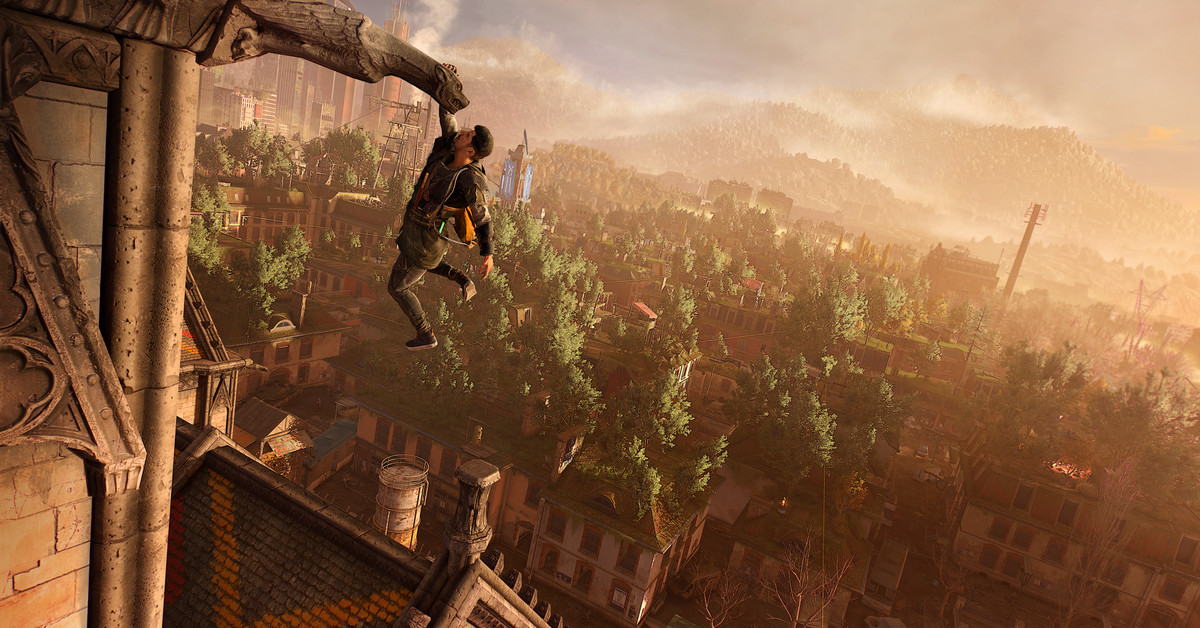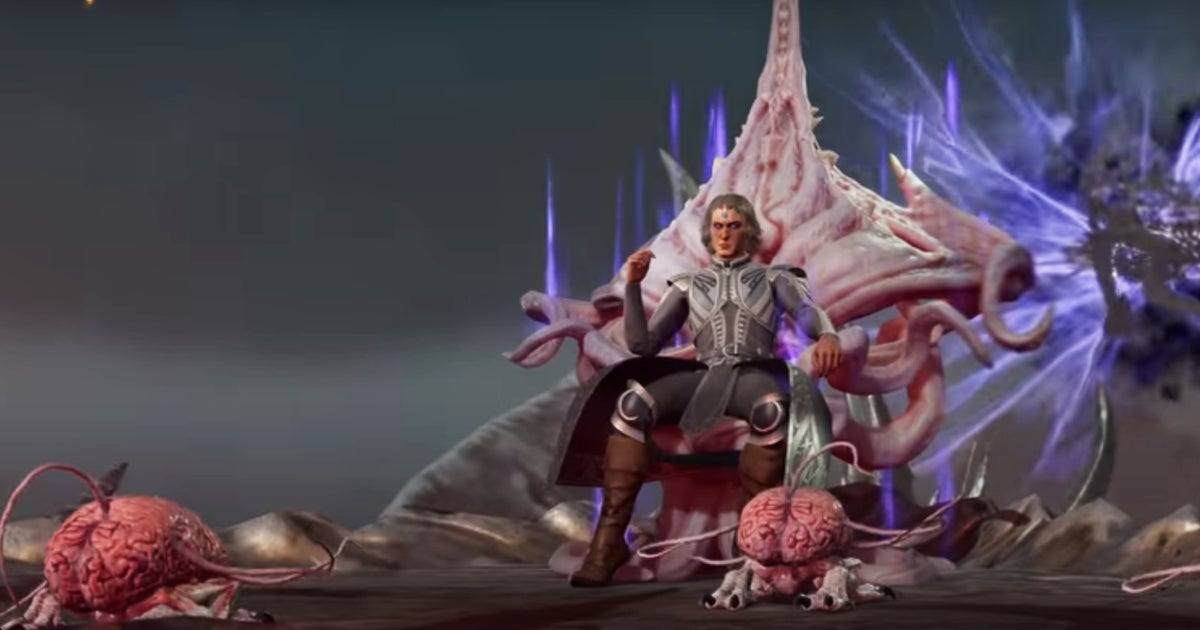Dying Light 2 is an expansive open-world game with countless activities and quests and challenges to take on as you explore the city of Old Villedor. In this Dying Light 2 beginner’s guide, we’ll help you get started parkouring and dropkicking zombies faster with tips and tricks we’ve learned from our many hours with the game.
Take it slowly
Dying Light 2 is in no rush. Even after a lengthy introduction slash tutorial, you’ll be on rails for a while. And even when the city of Old Villedor opens up, you’ll be restricted by your level and too-low stamina, and you won’t have many activities to choose from.
As frenetic as navigating the city with your parkour skills is, everything else about Dying Light 2 is much more considered. Mechanics like the paraglider or even a ranged weapon won’t be introduced for dozens of hours.
That’s all by design. Everything will go smoother if you embrace that and take your time. Explore and investigate the city. Do some side quests. Rescue some strangers. Meet the game on its own timeline.
And above all else, get your stats up because …
Respect the level recommendations
Your character’s level reflects the XP you’ve earned toward parkour and combat skills, the activities around the city you’ve accomplished, and your overall progress. Considering that we beat the game at level 6 after about 50 hours, it’s safe to say that leveling up is slow. And it also means there’s a huge difference between level 1 and level 2. Your level affects the gear your scavenge or buy, so it’s a good gauge of how much damage you can take or deal out.
:no_upscale()/cdn.vox-cdn.com/uploads/chorus_asset/file/23210758/Dying_Light_2_map_and_Quest_Level_icon.png)
Quests and other activities on the map (and the enemies you encounter there) have a level in the upper left corner. Treat that as a recommendation for your level when you tackle them — zombies at the same level as you will present a real challenge and can overwhelm you fast, so anything higher becomes deadly fast.
That said, parkour and hand-to-hand combat aren’t your only option for completing challenges because …
Stealth is always an option
In a game so focused on leaping off tall buildings, graphically chopping off zombie heads, and just generally over-the-top action, it’s incredibly easy to forget that there’s a stealth mechanic in there Dying Light 2. There are lots of hiding places scattered around, and a one-hit-kill takedown mechanic when you sneak up on someone (or something). Stealthing through also lets you bypass a fight entirely if you just don’t want to get involved — in fact, stealth is required to get past some of the toughest enemies in the game who you basically can’t kill with your weapons.
Never forget that it’s possible to clear out zombie-infested areas completely via stealth takedowns — meaning that you don’t have to worry about how much damage you can deal or how long your stamina will last while swinging your weapon.
Speaking of stamina…
Increase your stamina first
You only have direct control over two of your stats: Health and Stamina. Everything else is determined by the gear you equip (more on this below).
Aiden’s stamina determines how long he’s able to climb and hold on to ledges as well as how many times in a row he can swing his weapon.
To upgrade your Stamina (or Health), you’ll need to find inhibitors. You’ll get them from main story quests and from completing activities around the map. For every three you collect, you can level up your Health or Stamina once. Stamina is absolutely more important than Health for most (if not all) of your game. We leveled up Stamina twice for every level of Heath we increased.
Leveling up is going to require a lot of Inhibitors, so…
Prioritize Inhibitors over supplies
There’s a lot going on across Dying Light 2‘s map. There are side quests, safe zones, windmills, air drops, water towers, electrical stations, and more. Hovering over each icon on the map shows you the (potential) rewards for completing the activity.
Loot Sources Like Military convoys, Dark Hollowsand Forsaken Stores will get you gear and crafting materials. They’re useful one-stop shops, but you’re also going to be looting that stuff from basically everywhere.
Far more important are the activities that reward you with inhibitors (see above). things like airdrops, GRE Quarantine Buildingsand GRE anomalies are much more immediately useful.
Clothes make the class
Like we said above, you only have direct control over your Health and Stamina stats in Dying Light 2. Your gear (clothing) controls everything else, and thus your headware, Gloves, Chest piece, bracers, joggersand sneakers all have stat modifiers associated with them.
Broadly speaking, they fall into four categories that are basically classes (but you can mix and match as you see fit): Brawler, Medic, Ranger, other tank.
- brawlers gear focuses on one-handed (1H) weapons and melee weapon stamina costs.
- medic gear improves parkour damage and healing effectiveness.
- ranger gear emphasizes ranged weapons and stealth.
- tank gear reduces the damage you take and focuses on two-handed (2H) weapons.
All gear is categorized by something like rarity: common (grey), uncommon (green), rare (blue), unique (purple), and artifact (yellow). Better gear has more and better stats.
Survivor Sense can only be upgraded with clothing
While gathering stuff — everything from crafting supplies to Inhibitors — you’re going to using your Survivor Sense constantly. Survivor Sense is like a combination of X-ray vision and radar, which marks items to pick up on your HUD. At the beginning of Dying Light 2it lasts for approximately one second and seems to have a range of about five feet.
You can only improve your Survivor Sense by equipping new gear — especially Medic and Ranger gear. Look for gear with stats for Survivor Sense Duration other Survivor Sense Range.
Don’t get attached to your weapons
Every weapon in Dying Light 2 has a durability. Using a weapon to cut through zombies wears it down until, eventually and inevitably, the weapon breaks. And that’s fine. You’ll find and and buy a steady stream of new weapons of every variety (and ever-improving level/quality), so you’ll never find yourself unarmed. Use a weapon until it breaks, and then move on to something new — chances are you found a better weapon anyway.
When you have the option, remember to match your weapon to your gear — one-handed weapons with Brawler gear and two-handed weapons with Tank gear.
You can restore the durability of a weapon by installing (or changing) a mod on the tip, shaft, or grip. Mods add some extra damage or effects on critical hits.
Earn XP and unlock new Skills with Combat and Parkour
Beyond the stats you improve via gear, Dying Light 2 also has a skill tree for Combat and one for Parkour. The Combat skill tree gives you new or improved ways to punch things, and the Parkour skill tree gives you new or improved ways to navigate the city.
You earn XP toward these skill trees by doing the activities. Chopping off zombie heads earns you Combat XP, and jumping across rooftops earns Parkour XP.
Speaking of parkour…
You can probably make that jump
When you first start out, it’s hard to get a sense of Aiden’s jumping abilities. Ledges will seem too high or a gap will seem too wide to jump. And to that we say: Go for it. And you’ll probably make it — parkour and all of the rooftop navigation is such a fundamental part of Dying Light 2 that it makes sense that your jumping abilities are a little superhuman.
Given enough time, you’ll have a better sense of the distances. More importantly, you’ll also unlock Skills like Firm Grip other Wall Run will make you even more adept at jumping and climbing.
Faction structures change the landscape
Throughout Dying Light 2you’ll deal with two factions — the Peacekeepers and the survivors. In each neighborhood, you’ll find a facility – on Electric station or a WaterTower — that, once completed, you’ll assign to one fact or the other.
Assigning a facility brings changes to the neighborhood. Windmills and their associated safe zones become populated with members of the faction (Faction Structures), and additional safe zones pop up throughout the neighborhood.
More importantly, though, each faction builds improvements throughout the neighborhood. Assigning an area to Survivors gets you Parkour Helpers like Ziplines and Airbags, while the Peacekeepers install Traps and Weaponry that help in combat.
Time of day matters
Dying Light 2 has a day-night cycle, and the infected zombies tend to avoid daylight as best they can. They stay inside during the day and fill the streets at night. Consider this whenever you take on a task. If you have to traverse the streets (or even the rooftops) for a long way, it’s better to travel during the daytime. If you’re heading inside a building, it’s safer to go at night when the zombies are outside.
That said, you do get a bonus for surviving the night when the game’s harder. the Night time bonus gives you extra XP for everything you accomplish while it’s dark out, so you will get rewarded for tackling tasks at night.
Unlock metros whenever you see them
You’re going travel back and forth across the city a lot as you play Dying Light 2. Happily, there’s a fast travel system that will take you quickly from neighborhood to neighborhood.
Each district has a metro station. Each Metro Station has an associated nighttime activity — basically a side quest that you have to start at night — where you’ll clear out any Infected and power up the station’s backup generators. Once completed, the Metro Station becomes a fast travel destination that you can warp to whenever you want.
Table of Contents








